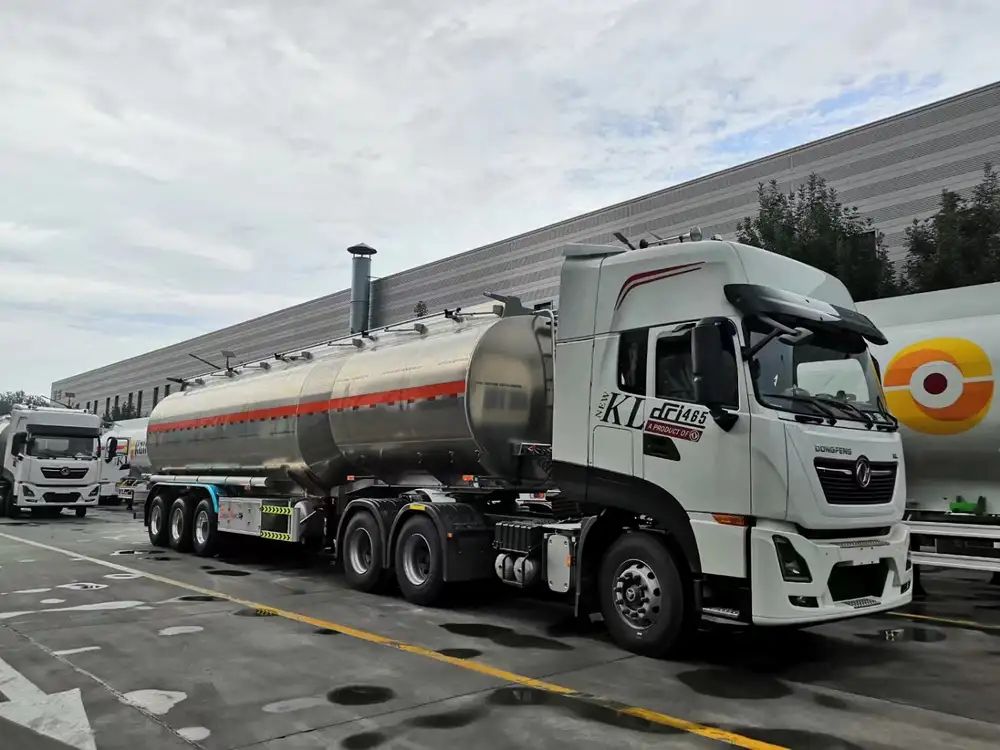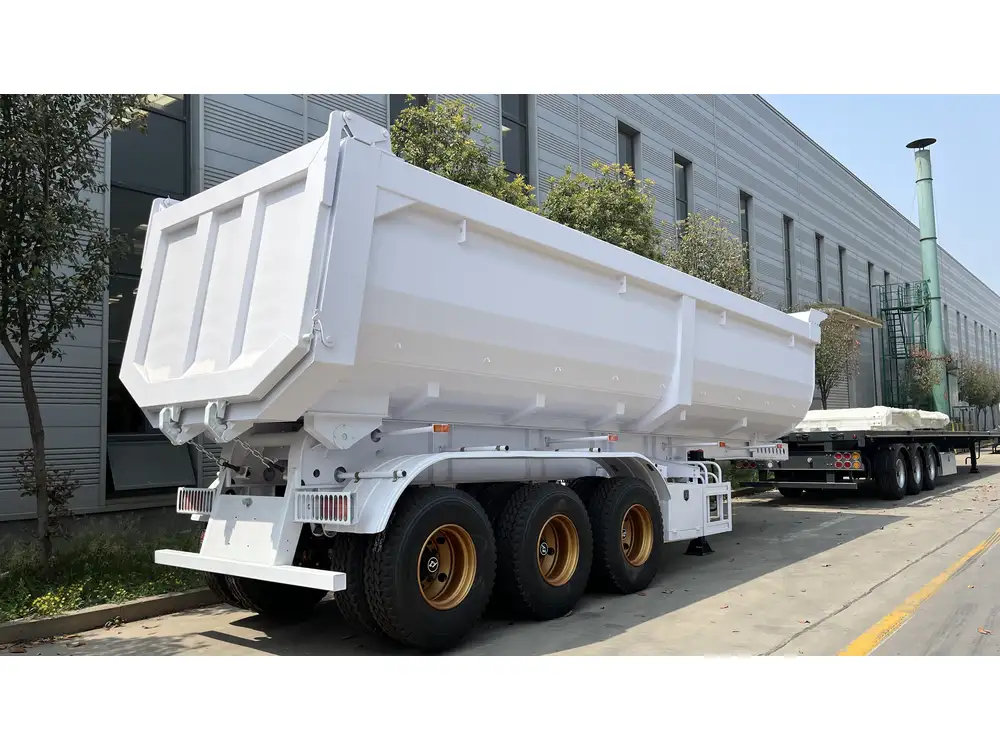Securing cargo effectively on a flatbed trailer is essential for safe transportation. This meticulous process not only prevents damage to the goods but also ensures compliance with legal safety standards. In this detailed guide, we will walk through the various techniques and tips that empower you to strap down your flatbed trailer successfully, enhancing both your efficiency and security on the road.
Understanding Flatbed Trailers
Flatbed trailers, characterized by their open design and lack of side walls, offer versatility for transporting a wide array of goods. Their structural simplicity allows for easy loading and unloading but necessitates proper strapping techniques to secure the load effectively.
Types of Flatbed Trailers
- Standard Flatbed Trailers: Primarily used for construction materials, heavy equipment, and oversized loads.
- Step Deck Trailers: Feature a lower deck height, ideal for taller items that may not fit under bridges.
- Conestoga Trailers: Equipped with a retractable tarp system, providing shelter for loads while allowing easy access.
- Double Drop Trailers: Allow for extra height and are primarily used for transporting taller machinery or equipment.
Understanding the specifics of the trailer you are using will help maximize the effectiveness of your strapping techniques.

Essential Equipment for Securing Loads
Proper load securing requires specialized equipment. Let’s delve into the key components necessary for safely strapping down your flatbed trailer.
Straps
- Ratchet Straps: These come with ratcheting mechanisms that provide more tension, making them ideal for securing heavier loads.
- Cam Buckle Straps: Easier to use for lighter loads, as they allow fast adjustments without excessive tension.
- Webbing Straps: Made from polyester or nylon, these straps have high tensile strength and resistance to wear and tear.
Anchors
- D-Rings: Commonly fixed to the trailer frame, they provide secure anchor points for strapping.
- Stake Pockets: Allow for additional tie-down options and versatility, accommodating various shapes and sizes.
- Tie-Down Bars: Fixed along the sides of the trailer to allow multiple tie-down points in various orientations.

Tools
- Tensioning Tools: In cases where manual adjustment is not enough, tensioning devices can help ensure tightness.
- Cutters: Handy for cutting straps to desired lengths or clipping off excess.
Steps to Strap Down a Flatbed Trailer
Let’s break down the process into structured steps:
1. Assess Your Load
Before any strapping begins, assess the dimensions and weight distribution of your load. Uneven distributions can result in hazardous driving conditions. Identify the center of gravity and balanced configurations to prevent shifting during transportation.

2. Choose the Right Straps
Select strapping materials based on the weight and susceptibility of your load. As a rule of thumb, heavier cargo should utilize ratchet straps, while lighter materials can be secured with cam buckle straps. Always check the working load limits (WLL) on the straps before use.
3. Arrange the Load
Proper arrangement is crucial. Heavier items should be placed on the bottom, with lighter items stacked on top. This arrangement helps maintain a low center of gravity and prevents top-heavy conditions. Ensure nothing protrudes beyond the edges of the trailer.
4. Position D-Rings and Stake Pockets
Based on your load’s position, determine the optimal locations for attaching your straps. Use D-rings and stake pockets strategically; always try to move from the bottom to the top for optimal leverage.

Table: Recommended Tie-Down Configurations
| Load Type | Recommended Strap Type | Number of Straps |
|---|---|---|
| Heavy Equipment | Ratchet Straps | 4 – 6 (depending on size) |
| Lumber | Cam Buckle Straps | 2 – 4 |
| Machinery | Ratchet Straps | 4 – 6 |
| Palletized Goods | Combination of Straps | 2 – 3 per pallet |
5. Secure the Load with Straps
This is where hands-on work truly begins. Follow these guidelines while securing your load:
- Wrap the strap around the load securely, ensuring a snug fit without excessive slack.
- Attach the strap to the D-ring or anchor point, avoiding sharp edges that could damage the webbing.
- Tighten the strap properly using the ratchet mechanism or cam buckle. Ensure a firm hold while being cautious not to over-tighten, which could potentially warp or damage the cargo itself.
6. Incorporate Additional Safety Features
For larger or heavily loaded trailers, consider additional safety measures:
- Edge Protectors: These plastic or rubber additions shield the strapping material from sharp edges, extending the life of your straps.
- Warning Flags: Attach these to any overhanging loads to alert other drivers of potential hazards.

7. Inspect Before Departure
Conduct a thorough inspection of your secured load. Look for:
- Tightness of Straps: Ensure no slack remains.
- Positioning of the Load: Confirm nothing has shifted during the strapping process.
- Condition of the Straps: Look for frays or damages before hitting the road.
Legal Considerations for Load Securement
It’s critical to be aware of the legal standards governing load securement:
- Federal Motor Carrier Safety Administration (FMCSA): Establishes regulations that dictate the proper securing techniques for commercial payloads.
- State Regulations: In addition to federal laws, many states have unique regulations. Familiarize yourself with these to avoid fines and penalties.
Load Securement Regulations Overview
| Element | Requirement |
|---|---|
| Minimum Tie-Downs | Minimum of 4 tie-downs for heavy loads |
| Weight Distribution | Even load distribution across the axle |
| Inspection Frequency | Every 3 hours or 150 miles |

Common Pitfalls to Avoid
Here are some widespread mistakes made in the strapping process:
- Using Insufficient Tie-Downs: Always use the number of straps as recommended, and never underestimate the weight of your cargo.
- Ignoring Load Shifts: Continually monitor your load while en route, especially on surfaces that may cause vibrations.
- Neglecting Load Distribution: A poor distribution can lead to dangerous driving conditions or accidents.
- Underestimating Equipment: Always maintain and inspect your strapping gear and tools regularly.
Best Practices for Flatbed Trailer Load Securement
Incorporating the following best practices can boost efficiency and safety:
- Constant Education and Training: Regularly participate in training sessions on load securement.
- Stay Updated on Regulations: Laws change frequently; consistently review safety regulations to stay compliant.
- Conduct Regular Maintenance: Keep your flatbed trailer and securing equipment in peak condition.
Conclusion: Mastering Load Security
Securing a load on a flatbed trailer is a meticulous process that requires the right equipment, methods, and legal knowledge. Properly strapping down not only keeps your cargo safe but also ensures that you, your fellow drivers, and the public remain protected from potential road hazards caused by shifting loads. With the steps outlined in this comprehensive guide, we hope you can effectively secure loads on your flatbed trailer with confidence, ensuring successful and safe transport every time.
By applying these techniques and being aware of common pitfalls, you enhance both your professionalism and your reputation in the cargo transportation industry. Safe travels!



